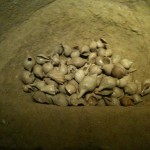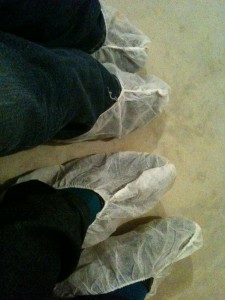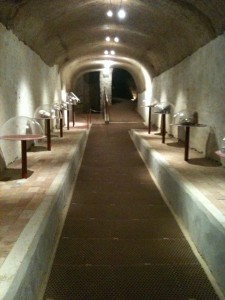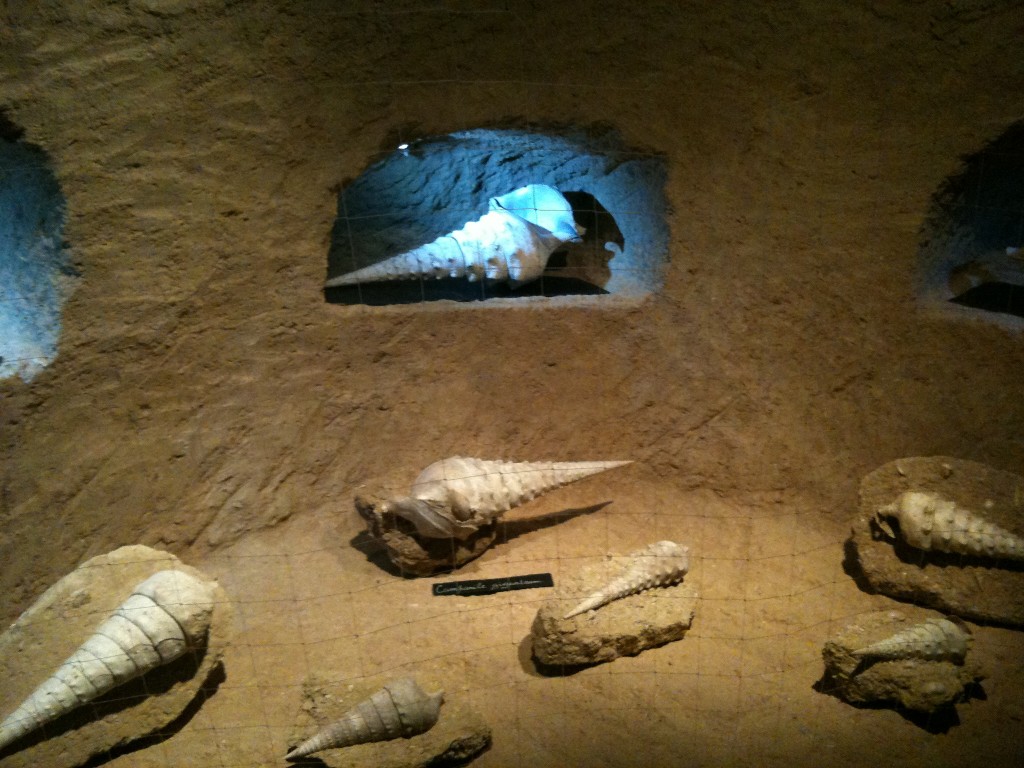La Cave aux Coquillages is a project of winemaker Patrice Legrand who had long been interested in the paleontological research and excavations conducted in Fleury-la-Rivière. As a young man, Patrice used to come to the village to dig for shells in the rich fossil beds of the Lutetian Age (about 45 million years old). In 2004 he had opportunity to buy two connecting wine cellars smack bang in the middle Fleury–la-Rivière and ever since then he has started his research and digging into the rich underground. At first his project was more of a hobby and part time occupation but in the last few years his focus has shifted from vigneron to full time geological excavator and paleontologist. In “La Cave au Coquillage” he want to show off the richness of the soil in it’s natural environment, and by doing so exposing a little of the specific terroir of the Vallée de la Marne in Champagne.
45 million years ago the Champagne region was in fact a tropical coast – where the sea water would have averaged around 27 °C. The Champagne sea beds were fertile grounds for fauna and flora and the waters were home to several kinds of shellfish, sea urchin’s, corral and large fish such as sharks and sting rays. Evidence of this rich marine life can be found in the 200 metre excavation tunnels where between 8-9 metres under ground a vast area of shells have been discovered. I was amazed at how well these shells had been preserved by the fine sandy limestone and chalky soil. Walking through the tunnels one gets a really good idea of how fine and sandy the soil really is…
In the first “room”, part of the original cellar purchased in 2004, there is a great display of some fossils going back to 180 million years – but not all of these are from the Champagne area. It is also here that we get a little history and paleontolgy lesson.
At the end of the room/cellar is where Patrice started his excavations and this is where the main exhibition area is situated.
Excavations are going on all the time and we found Patrice and his two apprentices unravelling several blocks of large shells.
A second part of the visit is a little more practical as our guide Sarah showed us first the different kinds of subsoils in a 28 metre funnel, and then went on to illustrate how one extracts the shells through the excavation process and the sifting of the sand. Towards the end of the visit – there is a tasting lab set up where a famous oenologist sometimes undertakes guided wine tastings. The aim here is to make the consumer aware of the mineral and iodine aromas in the wines. Consumers are given pure iodine in a vial to smell and are then guided by the oenologist to discover the same aroma in the Champagne.
The visit ends in the tasting room with a glass of Legrand-Latour Champagne. The wine is made by the Coopérative Vinicole L’Union de Vandières from grapes farmed on the family vineyards a little further down the Marne valley. The Legrand-Latour Brut NV Champagne is a fruity wine (90% Pinot Meunier), with lots of redcurrant, a great of minerality and saline notes in the finish. After having visited the excavation site you really can taste the iodine sea air notes in this Champagne.
La Cave aux Coquillages is open for visits on Thursday afternoon, Friday, Saturday and Sunday and visits are at 10AM, 2.30 PM, 4 PM and 5.30PM. The entry fee is 8 Euro’s for adults and 6 for children. Groups of more than 5 people best make a reservation. La Cave aux Coquillages also offers paleontological workshops and guided tastings on a regular basis. Please check their website for details.




